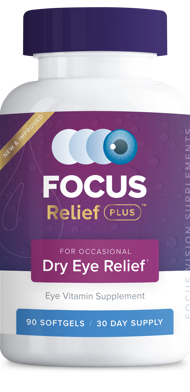Dry eye is one of the most common eye conditions in the United States as it affects millions of Americans every year. Dry eyes occur when tears are not able to provide adequate lubrication for the eyes. This can happen if your glands don’t make enough tears or if your tears dry up too fast. If left untreated, dry eyes can turn into a chronic condition that causes ongoing discomfort and vision problems.
1. What are the risk factors of dry eyes?
Age - People who are over the age of 50 have a higher risk of developing dry eyes, and the risk increases as they get older. This is because the eyes produce fewer tears overall as part of the aging process.
Medications - Certain medicines including antihistamines, decongestants, blood pressure medications, and antidepressants can reduce tear production.
Gender - Women have an increased risk of dry eyes due to pregnancy, menopause, and other hormonal changes. Taking oral birth control pills can also raise the risk of having dry eye conditions.
Windy/Dry Climates - Exposure to windy conditions regularly, especially in a dry environment, can cause tears to evaporate quickly.
Diet - Eating a diet that is low in vitamin A and omega-3 fatty acids has been associated with a higher risk of having dry eyes.
Contact Lenses and Surgery - Wearing contact lenses for long periods of time has been associated with an increased chance of having dry eye symptoms. Refractive eye surgeries, such as LASIK, can decrease tear production and contribute to dry eyes.
2. What are the signs and symptoms of dry eyes?
The most common symptoms of dye eyes include the following:
A feeling that there is grit in the eyes
Stinging sensation
Burning sensation
Red eyes
Light sensitivity
Discomfort while wearing contacts
Trouble driving at night
Mucus around the eyes or in the eyes
Blurry vision
Excessive wateriness in the eyes
Eye fatigue
3. How can dry eyes be treated?
Dry eye symptoms can be caused by a combination of problems, but luckily, they can also be treated with more than one therapy. First, if you’re experiencing any of the dry eye symptoms listed above, see your doctor. Your eye doctor can help you determine the underlying cause of your dry eyes and therefore recommend the best treatment. In most cases, they will begin treatment right away to improve comfort. Below are some of the most common dry eye treatments:
Eye Drops - This is the most common treatment for mild dry eye. Over-the-counter artificial tears can be applied as needed less than 4 times per day, but if your eyes are still bothering you, you may need prescription eye drops that can stimulate tear production.
Omega-3 Supplements - Nutritional supplements, such as Focus Relief Plus®, have been the focus of studies on dry eye symptoms and other eye and vision problems. Focus Relief Plus® provides nutrients to help those with mild dry eye symptoms.
Tear Duct Plugs - Punctual plugs are small devices that are inserted into the tear ducts to block drainage in order to increase moisture to help relieve dry eyes.
Eyelid Cleansers - Studies show that clean eyelids can help alleviate the symptoms of eye conditions such as blepharitis and dry eyes. Below are two of the most popular types of cleansers to consider:
Eyelid Scrubs - Eyelid scrubs are gentle cleansers that soothe inflamed eyelids and can provide relief from dry eye symptoms. Eyelid scrubs that contain tea tree oil, like Focus Eyelid Scrub Formula, can even help kill mites that live in the eyelashes and can cause eye diseases such as Blepharitis.
Hypochlorous Acid - Hypochlorous acid occurs naturally in the body. While the chemical neutralizes pathogens, it’s mild enough not to harm the body, unlike most disinfectants.
As mentioned before, omega-3 fatty acids are known to play an essential role in the production of healthy tears and are often recommended as part of a treatment plan for occasional dry eye. Focus Relief Plus® provides 1620mg of re-esterified triglyceride (rTG) Omega-3 fatty acids per day with over 90% EPA and DHA, a higher concentration than other leading supplements.
